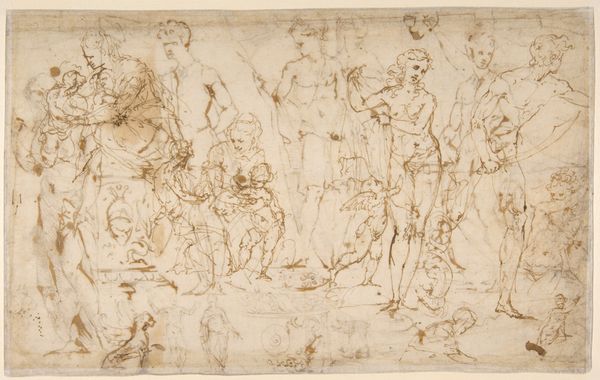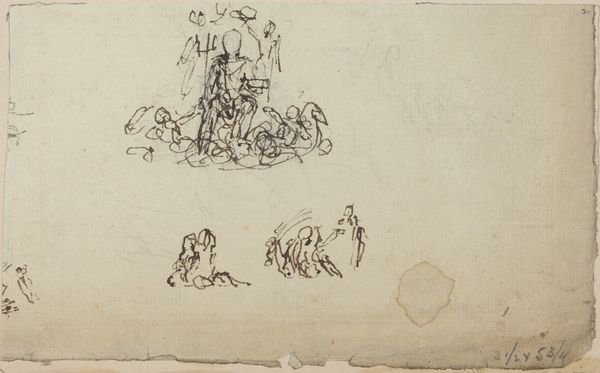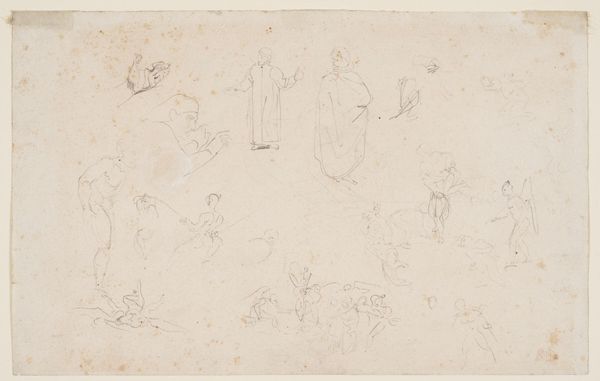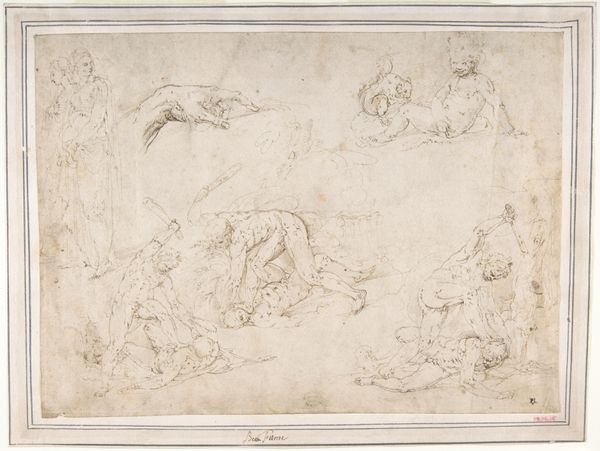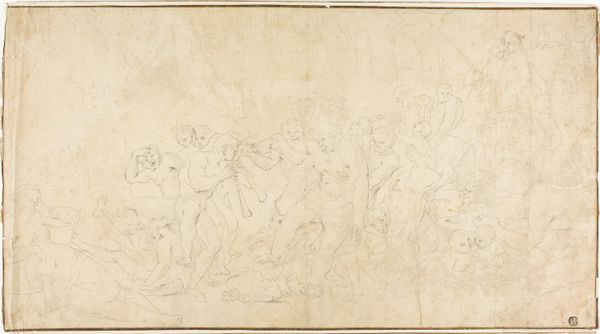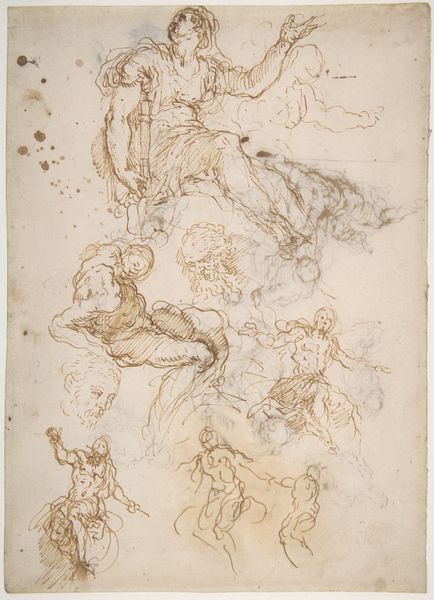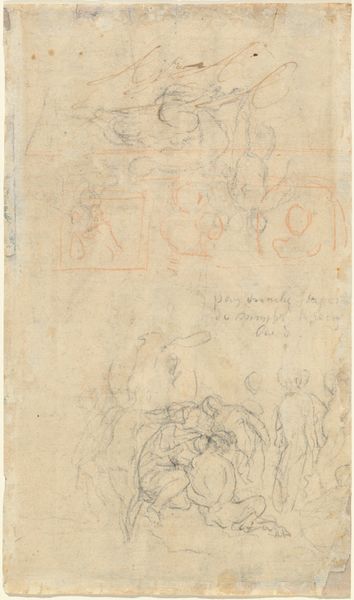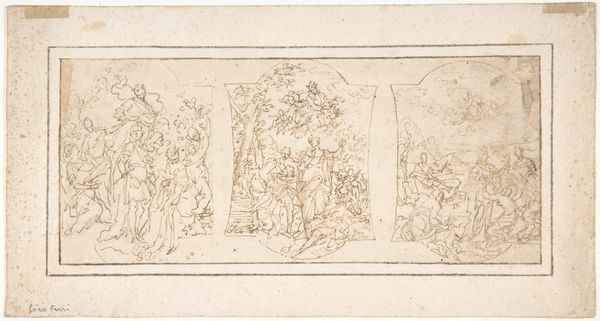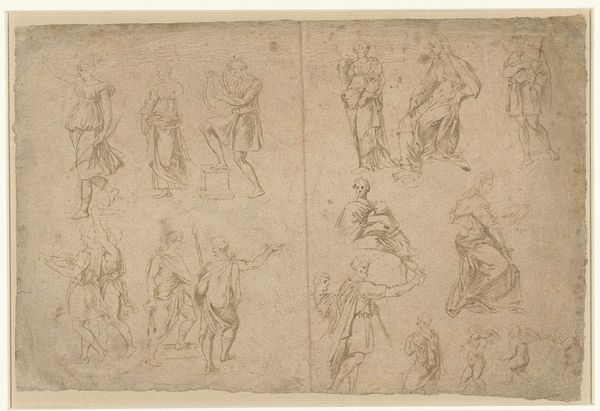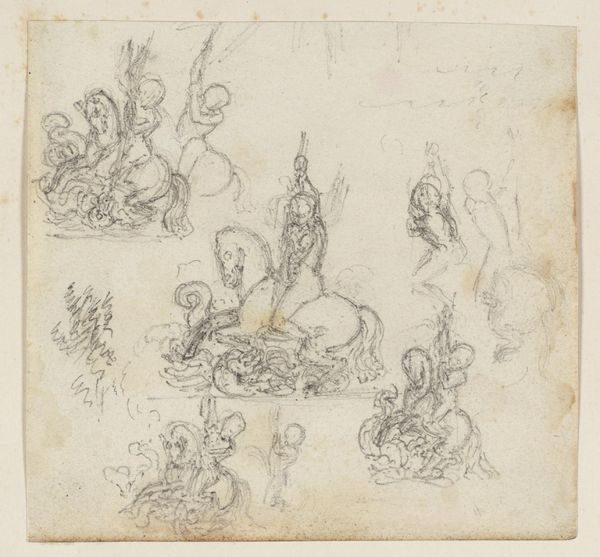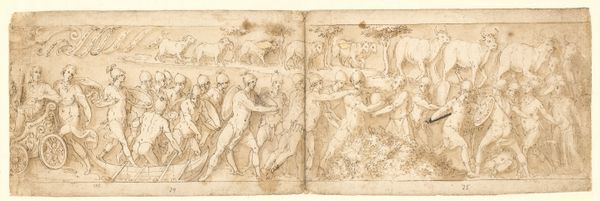
drawing, ink
#
drawing
#
figuration
#
11_renaissance
#
ink
#
ink drawing experimentation
#
history-painting
#
academic-art
#
italian-renaissance
Dimensions: sheet: 25.8 x 37 cm (10 3/16 x 14 9/16 in.)
Copyright: National Gallery of Art: CC0 1.0
Curator: What a whirlwind of figures! This ink drawing by Giulio Campi, titled "An Ascension and Other Studies," presents a dynamic, almost frenetic energy. What are your first impressions? Editor: Chaos! But a beautiful chaos. I’m immediately struck by how Campi’s draftsmanship conveys a sense of urgent movement. There's something almost performative about this study, despite the apparent lack of a central, clearly defined subject. Is there some commentary on power structures within it? Curator: Well, let's delve into the symbology. Notice the variety of figures – some winged, others in powerful, athletic poses. The central circular grouping evokes a heavenly host or perhaps even a vision of paradise. The use of figures ascending throughout cultures acts a signifier for hierarchies both sacred and profane. Does this drawing serve as critique? Editor: Precisely! While seemingly reverent on the surface, one could read the clustered figures and individualized cherubic sketches as Campi probing, ever so subtly, the very act of representing divine ascension. It feels very aware of its own construction. Also, the contrast with what seems like the architecture on the left draws our attention: classical bodies, yet idealized, restrained and trapped. What does it imply in relation to the freedom depicted in the ascending figures? Curator: Fascinating points! Renaissance artists often employed classical motifs to imbue their work with authority and tradition, yet it simultaneously provides context of past restrictions being broken or explored anew. Editor: Exactly. What resonates deeply is Campi's delicate yet confident rendering, suggesting an artist who has internalized these constraints and is now working within, perhaps also against, them. How can this study be related to larger societal conversations of Campi's period? Curator: Absolutely. It is intriguing to think about how a piece can symbolize historical conventions but equally suggest underlying social dialogues. The act of breaking away can feel as important and significant as upholding them. Editor: This really shows how something seemingly straightforward opens to deeper interpretations as we dissect its elements and the story behind it. Curator: I concur completely. We come full circle appreciating tradition but welcoming evolution and change within a culture's artistic journey. Editor: Art historical understanding helps appreciate what this Renaissance artwork means, not just then, but also for our times.
Comments
No comments
Be the first to comment and join the conversation on the ultimate creative platform.
